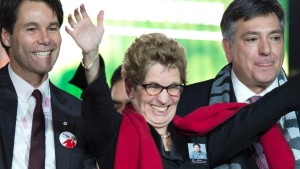 After the last post, readers wanted more discussion about doctors’ fees; how doctors bill for services they provide.
After the last post, readers wanted more discussion about doctors’ fees; how doctors bill for services they provide.
- Are fee codes just a fancy way to track services?
- How do fee codes get created?
- Why does the government pay doctors?
Teams of bureaucrats and doctors create fee codes. The fee-code-committee learns about services that patients need. The committee works out a fee so that providers can offer the needed service.
Let’s consider a few examples.
I work in a tiny rural office. We still offer venipuncture (blood draws) for routine lab tests.
I bill $3.45 for a venipuncture in my office. My staff draws the blood. The fee was closer to $5 before it was cut in 2012.
If you’ve had a blood test, is the set up and time required only worth $3.54? After repeated cuts to this fee, most patients now have to drive into a lab for bloodwork. Some rural patients drive over an hour for tests. When government cuts fees for drawing blood below what it costs to hire a phlebotomist, then doctors are forced to stop providing office venipuncture.
Another example. We offer ECGs (electrocardiogram – checks your heart) in our rural office.
I get paid $4.45 to interpret the ECG plus $6.60 to cover the cost of the stickers to attach the leads, paper, machine purchase/maintenance. Staff performs the test.
At this point, a business minded person would question my sanity. There’s no way I can cover the costs of the test for $11.05. They’re right. When our machine dies, we will not be able to afford a replacement. In fact, we probably should stop doing them now.
Fees Meet Needs
Fee codes get made to meet service needs. Fees solve specific patient care access problems. Fees have to cover the costs required to offer the service or doctors – small business owners – cannot provide the service.
One final example. Consider driving to the hospital to examine a newborn baby.
It costs around $7-10 for gas + $20-$25 for parking + $?? for mileage = $30-$35 just to get to the hospital. The drive, baby exam and charting takes between 60-90 minutes if I rush. I bill OHIP $52.
I earn less than $20 per hour to provide this service. I still have to pay my staff, lease, licences, etc. in the order of 35-40% of my billings. As much as I love new babies – and I LOVE new babies! – I cannot afford to provide this service. This is one reason why so few family doctors spend their days providing care in hospitals now.
Fee codes direct patient services
Just like grocery store specials encourage shoppers to purchase certain vegetables, fees encourage doctors to perform certain services. Shoppers could purchase other veggie’s. Doctors could perform other services. Shoppers buy veggies on sale because it makes good sense, not because shoppers are greedy or selfish. Doctors are encouraged to provide services that the government values with an appropriate fee.
But what about patient need? What if there isn’t a fee, or the fee is too low, and patients still need the service?
Great question! Doctors still provide the service if they can. Just like we still provide venipuncture and ECGs in our office, doctors will still try to provide the services simply because patients need them. Then physicians will plead with the government for an appropriate fee for the service.
That’s what this fight with the government is all about. Hoskins slashed fees for new patients, after hours care, weekends, on-call and a trailer load of other important services. Patients need those services. Fee cuts harm patient care.
I hope this helped. I’d love to hear your thoughts about fees, incentives and greed. Please let your MPP know that Wynne’s fee cuts harm patient care. Thank you!
photo credit: newsfeed.time.com


